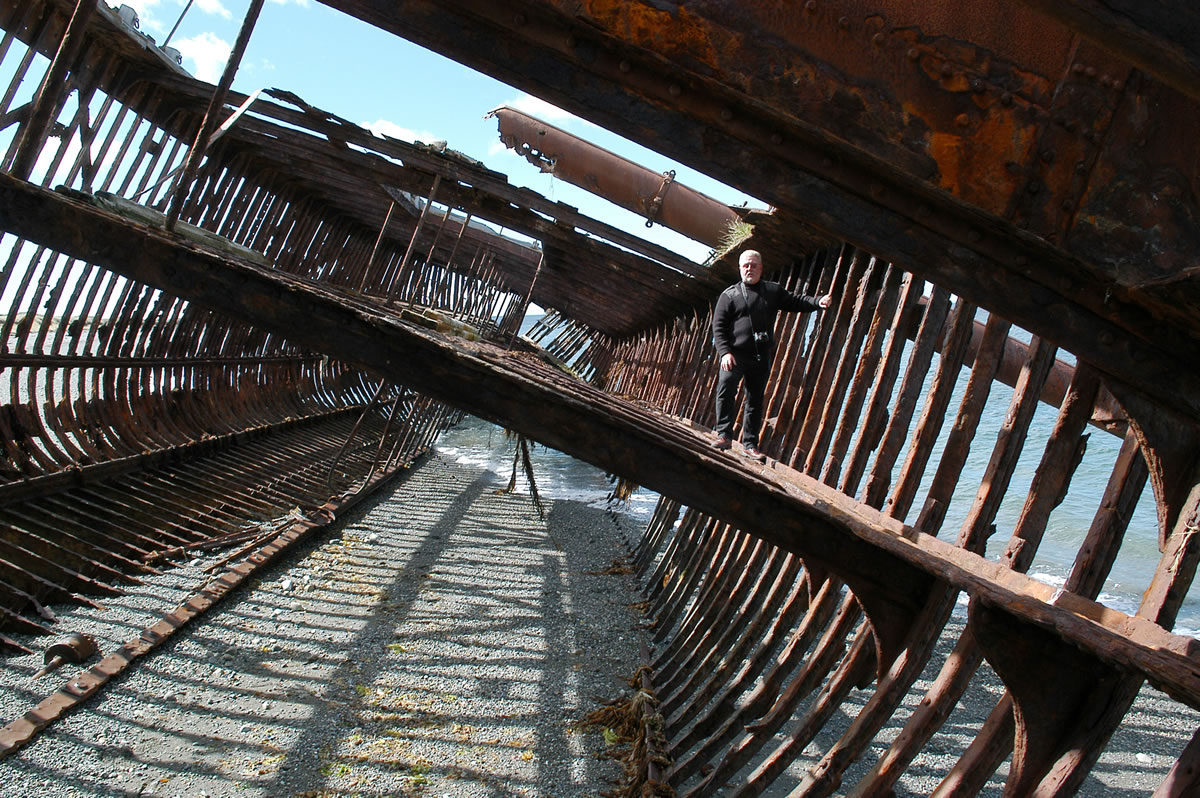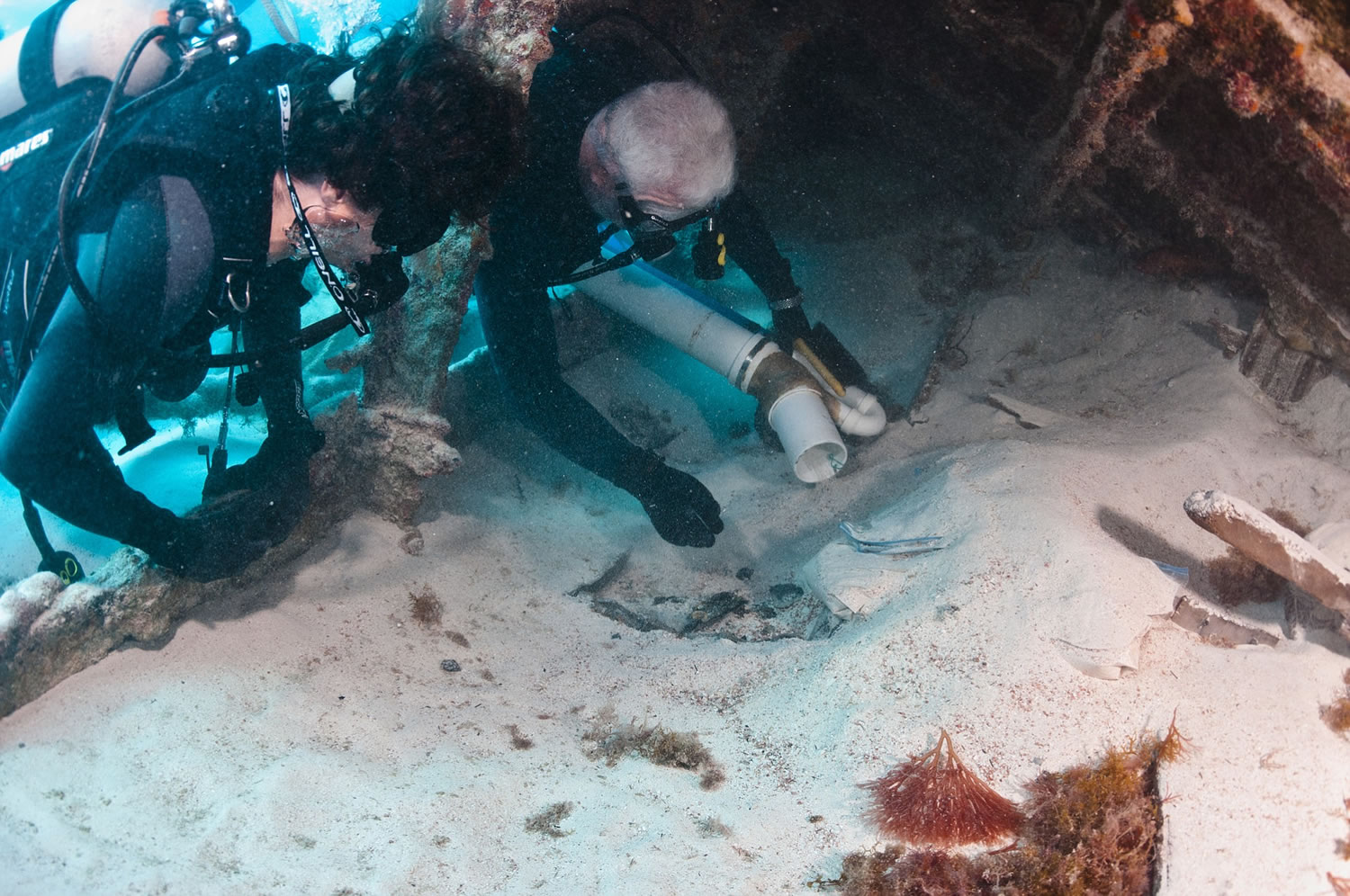There are an estimated 3 million shipwrecks spread across ocean floors around the planet, according to the United Nations Educational, Scientific and Cultural Organization
Jim Delgado’s work has involved some of history’s most significant moments, with names and events that include HMS Titanic and the USS Monitor, Pearl Harbor and D-Day.
Some of those names also designate the final resting places of people who were caught up in that history. It’s something Delgado keeps in mind in his job as a maritime archaeologist.
The former Vancouver resident is the director of America’s maritime heritage, a position that is part of the National Oceanic and Atmospheric Administration.
Delgado also is a diver, author, historian and television host. In those roles, he has visited the remains of more than 100 ships lost over the last 2,700 years.
“It’s not the number of wrecks; it’s the powerful stories associated with some of these ships,” Delgado said from his home in Maryland. “Even when you don’t have a crew list, those sites, those wrecks can speak to you.
“Whether it’s 2,000 years or 50 years, when you drop down and see something like that, you’re struck by how fast life goes. How people can disappear from the historic record and how you — as an archaeologist — can help address that,” Delgado said. “That’s pretty powerful as you begin to grapple with what you’re seeing. It’s the fact that these encapsulate real people’s stories.”
‘You still see Titanic’
Some of those stories are part of our culture. But no account or portrayal of the sinking of the Titanic can prepare you for the sight of the wreck. Delgado saw it from inside a submersible craft that took him down 12,400 feet to the bottom of the North Atlantic.
“Seeing Titanic for the first time is an amazing experience. You get this sense of something you’ve read about, you’ve heard about, you’ve seen it in movies, and suddenly there it is,” Delgado said in an interview on a Canadian website. “It’s not just a story, it’s not just a film clip, it’s the real ship.
“Down there in this very surreal environment of depth and darkness and cold and isolation, your attention is focused intensely on the ship. As you begin to explore it, what comes to mind is — in each and every place — the human stories associated with it, as well as the compelling and fascinating effects of time and the wrecking event itself.”
The setting is a combination of “ghost town, museum, laboratory, memorial and graveyard: a floating community full of people like you and me, slowly sinking,” he said.
After the ship tore apart violently on the way to the sea bed, “It looks like a plane crash when you map it out. And it is powerful and sad. For many of us, there are times when you close your eyes or you open them in the middle of a dark night, and you still see Titanic,” Delgado said in the interview with the Canadian science center.
Delgado has called home from a lot of job sites, his wife said. And from the excitement in his voice that day, Ann Goodhart said, the visit to Titanic was his most moving experience.
So her reaction to the news was odd.
“I said, ‘That’s wonderful, dear; I’m late for a lunch,'” Goodhart said.
When she met her lunch companion, “I burst into tears,” she said.
In the back of her mind, Goodhart must have known that her husband was following the path — down, down, down — of 1,500 people who had plunged to their deaths.
“I guess I was more stressed than I thought,” said Goodhart, who was a Vancouver librarian for 21 years. “If something goes wrong, it’s a one-way trip.”
Delgado is the chief scientist in the effort to do the first full-scale mapping of the Titanic wreck site.
Faces without names
Delgado also is part of a project involving another iconic ship, the Monitor. The Union ship battled the Confederate navy’s Virginia — also known as the Merrimack — to a standoff in 1862 in the world’s first duel of ironclad warships. The Monitor sank in a storm later that year off the North Carolina coast, taking 16 sailors with it.
After the Monitor’s gun turret was recovered, the skeletal remains of two sailors were discovered inside. Delgado has been part of the effort to put names with those two skeletal faces.
“The guys on the Monitor were people caught up in extraordinary events,” Delgado said. “Sixteen men who paid the ultimate price for their service to their country.”
He is part of a team trying to learn more about those sailors and their families, Delgado said. Another partner is the forensic laboratory at Louisiana State University, which used the skulls in 2012 to do facial reconstructions of the two sailors.
“The past year was the first time we were able to see how the two guys looked. We still don’t know who they were.”
But a Civil War photograph of the Monitor’s crew, with some names jotted on the back, offers some tantalizing possibilities.
“We have a suspicion. The one with his arms crossed (in the photo) may be one of the two sailors,” Delgado said.
Delgado has researched the sites of many other historic milestones, including the destruction of Kublai Khan’s fleet during an attempted invasion of Japan in 1274. The Mongol armada was destroyed by a storm the Japanese dubbed “divine winds.” Centuries later, during World War II, the Japanese phrase for “divine wind” became part of warfare in the Pacific: kamikaze.
And Delgado has done plenty of research at WWII sites, including the USS Arizona at Pearl Harbor and Juno Beach, one of the D-Day invasion spots.
Fort Vancouver’s navy
Some of Delgado’s earliest research involved Fort Vancouver’s maritime heritage … and yes, it has one.
“The Hudson’s Bay Company built a small private navy,” Delgado said. “I became associated with Vancouver when I was in the National Park Service. In the mid-1980s, I worked on a wreck at the mouth of the Columbia River. I worked closely with folks at Fort Vancouver.”
In 1991, Delgado became executive director of the Vancouver, B.C., Maritime Museum. He returned to Clark County several times for lecture appearances; during a presentation at Vancouver Community Library, he met the librarian.
“In a short period of time, I was married to Ann Goodhart,” he said.
It was an Interstate 5 marriage for five years, with one of them driving 307 miles — one way — each weekend to the other Vancouver.
Delgado was president and CEO of the Institute of Nautical Archaeology for four years before taking NOAA’s maritime heritage job.
Goodhart already was a certified diver when she met Jim, and she has accompanied him on several expeditions. They don’t always see eye to eye on the splendors of the deep, and Goodhart described a typical dive.
“I was pointing at the fish, and he was pointing at the bottom, where — as far as I was concerned — there was just a lot of rusty metal,” she said.
Then there was the trip to Bermuda for a dive on the Constellation, a World War II transport ship than went down with a cargo of construction material … and glass morphine ampules.
“The sun was coming through the water,” she said. “A lot of ampules had shattered; little pieces of glass were all over the bottom, and the sun hit them, and they looked like diamonds sparkling all over the bottom. I was admiring that, and Jim was off somewhere.”
“Climbing through some boilers,” he said.
Untouched for 1,800 years
Goodhart accompanied him in 2010 on a project in Sicily, where a nonprofit group was recovering artifacts from a Roman ship that sank in 300 AD.
A remote-controlled robot filled mesh baskets with items. The baskets were reeled up to the deck of the research ship, where crew members unloaded them.
“I’m around the railing, trying not to get in the way,” Goodhart said. “The leader of the expedition picked up this incredibly beautiful wine jug, perfectly preserved. He looked at me and said, ‘Ann come take this.’
“I take it and put it on the table. I’m the second person in 1,800 years to hold it,” she said.
In addition to a sharing an appreciation of maritime history, Goodhart and Delgado have some entwined personal histories. Their lives have been touched by aspects of each other’s work.
“The Monitor is special to me, too,” Goodhart said. “My great-grandfather, who was in the Union Navy, commanded a Monitor-class ship. All of a sudden, I have family ties to the Monitor design.”
Delgado said he owes a lot to people like his wife: “When I first started in archaeology, it was public libraries and librarians that opened that world for me.”
Tom Vogt: 360-735-4558; http://www.twitter.com/col_history; tom.vogt@columbian.com.





